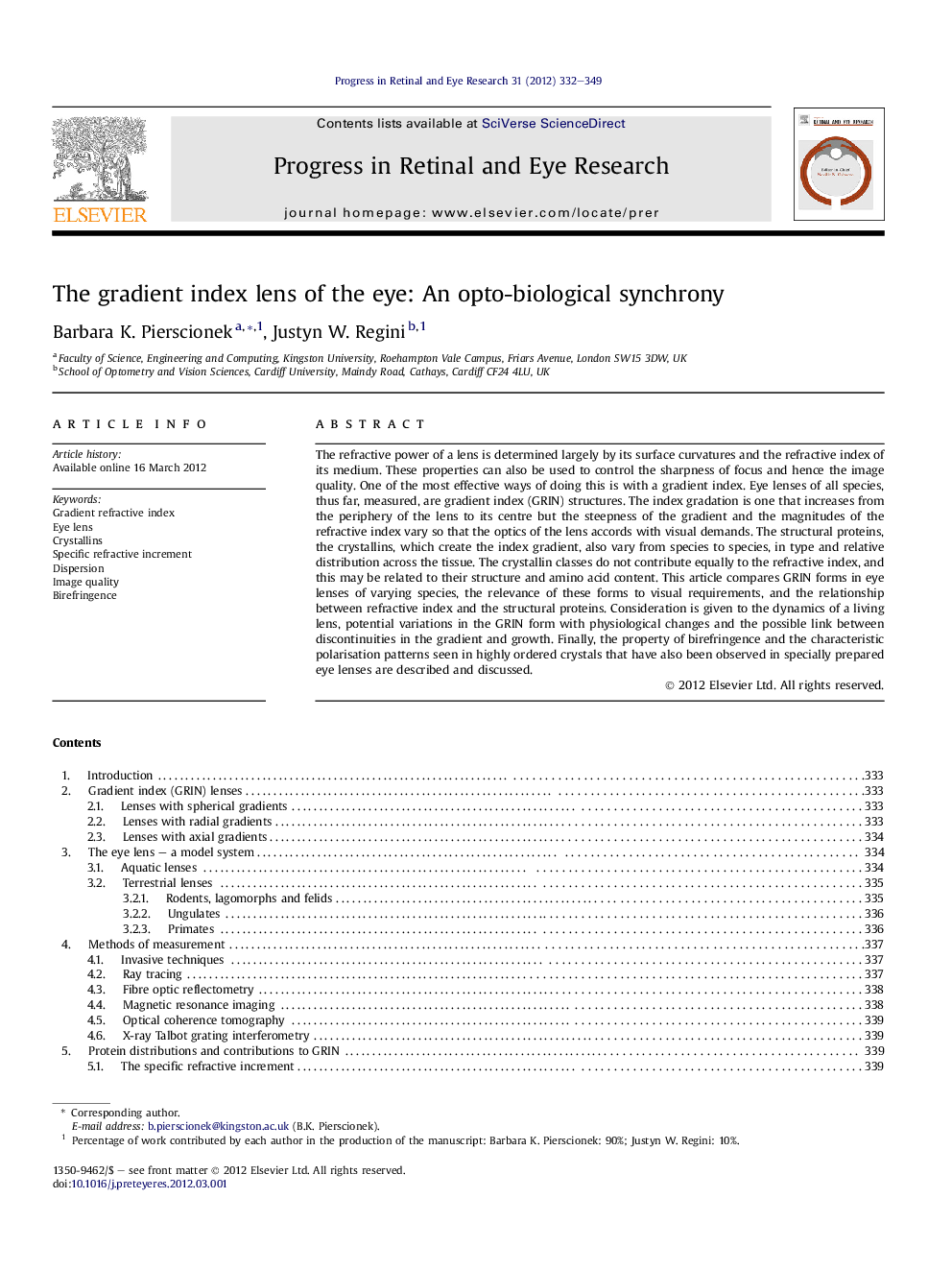| Article ID | Journal | Published Year | Pages | File Type |
|---|---|---|---|---|
| 4031980 | Progress in Retinal and Eye Research | 2012 | 18 Pages |
The refractive power of a lens is determined largely by its surface curvatures and the refractive index of its medium. These properties can also be used to control the sharpness of focus and hence the image quality. One of the most effective ways of doing this is with a gradient index. Eye lenses of all species, thus far, measured, are gradient index (GRIN) structures. The index gradation is one that increases from the periphery of the lens to its centre but the steepness of the gradient and the magnitudes of the refractive index vary so that the optics of the lens accords with visual demands. The structural proteins, the crystallins, which create the index gradient, also vary from species to species, in type and relative distribution across the tissue. The crystallin classes do not contribute equally to the refractive index, and this may be related to their structure and amino acid content. This article compares GRIN forms in eye lenses of varying species, the relevance of these forms to visual requirements, and the relationship between refractive index and the structural proteins. Consideration is given to the dynamics of a living lens, potential variations in the GRIN form with physiological changes and the possible link between discontinuities in the gradient and growth. Finally, the property of birefringence and the characteristic polarisation patterns seen in highly ordered crystals that have also been observed in specially prepared eye lenses are described and discussed.
► The gradient index in the eye lens varies across species to accord with visual demand. ► The crystallin proteins contribute to the refractive index to varying extents. ► The gradient index controls image quality and withstands physiological changes. ► Discontinuities in the gradient may be linked to growth processes. ► The dehydrated lens shows patterns akin to those in birefringent crystals.
